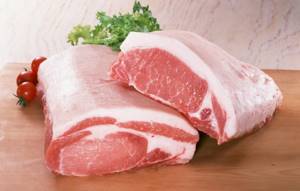Every year more and more people are overweight and “earn” stage 1 obesity. According to the World Health Organization (WHO), from the mid-70s of the last century to the present day, the number of obese people has more than tripled. Excess weight has long ceased to be an innocent topic for friendly banter, because obesity, even the initial first degree, is considered a disease. This is a disruption of the normal functioning of the body, accompanied by the active formation of fat cells in large quantities. Further development of the disease can cause serious harm to health.
But the good news is that initial obesity is not a death sentence; it is a serious problem that has already knocked on your door, but has not yet crossed the threshold. This means you urgently need to pull yourself together and act. Indeed, with an integrated approach, stage 1 obesity can be dealt with in a matter of months.
The first alarm bell rang
Doctors dealing with the problems of excess weight have identified the following types of obesity of the 1st degree:
- nutritional of constitutional origin;
- exogenous;
- visceral;
- gynoid.
The first type of obesity of the 1st degree is caused by a violation of a nutritious diet and a deficiency or lack of regular exercise, which is a tradition in the family. It is believed to be a hereditary problem associated with regular overeating. But exogenous constitutional obesity of the 1st degree is not considered hereditary, and therefore it is easier to treat. To do this, you will need to improve your diet and increase physical activity. Visceral is considered the most dangerous type for health, since in it fat envelops the internal organs. It is much more difficult to treat, and this type of obesity of the 1st degree can lead to diabetes. By the way, a beer belly in men is exactly closer to this type. Experts classify the gynoid variety as a purely female disease. Obesity of the 1st degree in women of this type is marked by the acquisition of a pear-shaped figure, when fatty tissue accumulates in the abdomen, thighs and buttocks.
Most often, a number of interrelated reasons lead to the problem. One of the most common and main factors in the appearance of excess weight, which develops into first-degree obesity, is excessive consumption of calories at low costs. Simply put, you can’t eat a lot of high-calorie foods and sit on the couch or in front of a computer monitor. Constant stressful situations that a person has to endure are a serious incentive for overeating. Chronic lack of sleep can also lead to the body gaining extra pounds. There are also a number of clinical reasons. This is, first of all, an eating disorder, when a person regularly overeats due to psychological problems. Also, disturbances in the functioning of the gastrointestinal tract, liver and pancreas can lead to excess weight.
The main symptoms that accompany first-degree obesity should be highlighted:
Visceral
The accumulation of fatty deposits occurs around the internal organs, so the pathology is the most dangerous and can only be cured with the help of a specialist. The most common example of visceral obesity of the first degree is beer belly and occurs in men more often than in women.
The disease also goes by other names:
- Android,
- Upper,
- Abdominal.

Excessive accumulation of fat occurs in the upper part of the body, so the patient’s figure resembles an apple.
The appearance of the disease is fraught with diabetes mellitus, a disease caused by metabolic disorders and the formation of malignant tumors. Moreover, people with the diagnosis find it difficult to exercise, and the heart works harder, so patients with excess body weight often suffer from heart attacks and strokes.
Be sure to read: Useful properties of dill for weight loss
Specific problems for different ages and genders
Many of the causes of stage 1 obesity are the same for all people, but a number of factors are individual. For example, many girls and women begin to gain weight during pregnancy and the subsequent lactation period. At this time, the female body actively produces special hormones that contribute to an increase in fat mass. During pregnancy, a woman can gain 10-15 kilograms, or even more.
The difficulty is that in an “interesting situation” women should never go on diets to lose weight. Therefore, they have to postpone special nutrition for grade 1 obesity until later. The only methods of combating excess weight in this case may be a transition to proper nutrition and regular fitness classes for pregnant women. After the mother gives birth to the baby and the period of breastfeeding begins, another hormonal surge occurs in the female body. In some cases, this may cause further weight gain.
Age-related menopause is considered another cornerstone for the appearance of stage 1 obesity in women. As a rule, this happens after the ladies have crossed the forty-year mark. During menopause, the female body actively stores fat, as it will subsequently supply steroid hormones. Also at this time, women experience changes at the hormonal level and the metabolic process changes. Many people don’t think about it and continue to eat as usual. But with age, a person’s activity decreases, and with the same amount of calories received by the body, the risk of stage 1 obesity increases.
In men, the risk of becoming overweight increases with age, since initially they are less inclined to accumulate fat cells than women. After reaching the age of thirty, the male body reduces the production of testosterone, which plays a key role in maintaining a healthy weight and building muscle. Every year, an average of two percent decrease in testosterone levels is recorded.
In recent years, the problem of childhood and adolescent obesity has become extremely acute. According to WHO, in 2021, about 340 million children and adolescents aged 5 to 19 years old were affected by this disease worldwide.
The peculiarity of obesity in adolescents is that it is often accompanied by psychological problems that occur against the background of hormonal surges. Teenagers are prone to outbursts of aggression, unmotivated irritability, and insomnia. At this age, the largest number of cases of anorexia or bulimia is recorded, especially in girls.
Calculation of daily calories
In the modern world, everyone has heard about calories, and everyone knows for sure that any product has its own calorie content. However, the main role of calories is not to harm a person and his figure, but to give energy to the body for normal existence.
Daily caloric intake is calculated using the Harris-Benedict formula based on several factors:
- Age.
- Weight.
- Height.
- Floor.
- Physical activity.
Daily requirement (DR) for men = 88.362 + (13.397 * weight in kg) + (4.799 * height in cm) - (5.677 * age in years).
Daily requirement (DR) for women = 447.593 + (9.247 * weight in kg) + (3.098 * height in cm) - (4.330 * age in years);
Now all that remains is to consider a suitable lifestyle:
- No physical activity: SP x 1.2
- Sports 1-3 days a week: SP x 1.375
- Sports 3-5 days a week: SP x 1.55
- Sports 6-7 days a week: SP x 1.725
- Very active sports every day, high physical activity at work, training twice a day): SP x 1.9
To lose weight safely, try reducing your daily requirement by 200–500 calories per day; this will help you lose 0.3–0.6 kg on average per week, and about 10–15 kg per month. And this is a very good result!
By losing weight at just such a speed, you can ensure that the extra pounds will burn off without returning, making your figure more and more attractive every day.
It is worth considering that you cannot replace all your daily calories with a couple of chocolate bars combined with pizza. Yes, you can enter your boundaries, but there is another important criterion in eating.

How to lose weight in your thighs
How to lose weight in your hips is a common question from girls with a pear shape and for many it is perceived...
Calculating body mass index

Diagnosing stage 1 obesity is a fairly simple matter that anyone can do even at home. This is easy to do by simply visually assessing your figure using a mirror. If you notice that your arms and shoulders have become rounder, your cheeks have become fuller, and your hips have become heavier, then this is already a cause for concern. In this case, we recommend resorting to more detailed diagnostics.
WHO experts recommend using a simple formula for calculating body mass index for this purpose. To do this, you need to divide your weight in kilograms by your height in square root (data in meters). For example, you need to find out the data for a person 1.6 meters tall and weighing 60 kg. To do this, you need to derive the square root of the height: 1.6 m x 1.6 m = 2.56. We divide the weight by this figure: 60/2.56 = 23.43. The resulting number is your body mass index. According to official WHO data, an index in the range from 18.5 to 25 is considered normal for women and men. With indicators from 25 to 30, you are already overweight, and after 30 you can talk about obesity of the 1st degree. This formula is suitable for determining body mass index for men and women of different ages. For greater convenience, you can find an online calculator on the Internet that will quickly help you find out your zip code.
In the case of children, calculations are carried out using a special method for different ages. To do this, you need to refer to the table “Special indicators of physical development of children,” compiled by WHO specialists. It presents indicators for two age categories: children under five years old and then from 5 to 19.
Causes
With 1 degree of pathology, the weight exceeds the optimal values, the BMI reaches 30 units (read how to calculate in the next section). Often, women themselves are to blame for weight gain: reluctance to exercise, the habit of overeating, often eating shortly before bed, negative factors against which metabolic pathologies develop.
The main reasons for obesity and accumulation of extra pounds:
- improper diet,
- physical inactivity,
- genetic predisposition,
- overeating with an established food culture in the family,
- During pregnancy and breastfeeding,
- emotional overload, depression, stress: women eat a bad mood, try to calm down, indulge themselves in excessive amounts of sweets or starchy foods,
- hormonal imbalances during puberty,
- metabolic disorder,
- pathologies of the reproductive system, for example, PCOS (polycystic ovary syndrome).
Drug treatment of obesity
It is best to immediately consult a doctor who will help you create a complete menu for weight loss and recommend the most effective physical exercises. If necessary, due to individual indications, he may also prescribe a special medication course to treat stage 1 obesity in women and men. In no case should you engage in self-medication here, since there is practically not a single pharmaceutical drug that would not have contraindications and side effects. Therefore, there is a high risk of worsening your situation.
Let's list some of the medications that doctors can recommend.
- In order for the patient to reduce his uncontrollable appetite, a specialist may prescribe the drug Phentermine. But side effects from taking it can include migraines, sleep disturbances and a general increase in nervousness.
- A drug called Orlistat works differently. Unlike the previous drug, it does not suppress appetite, but acts to reduce the absorption of fats by the body - by about 30%. But this medicine cannot be avoided without side effects. In this case, a person may experience diarrhea.
- Some doctors prescribe the antidepressant Fluoxetine to their patients to suppress obsessive feelings of hunger.
- The drug "Liraglutide" does not reduce appetite, but enhances the effect of the satiety hormone, due to which a person feels full and satisfied.
All appointments should be made only by a specialist! And you shouldn’t lose sight of the fact that treatment of stage 1 obesity is possible only in a complex manner, and without diets and physical activity the matter will not get off the ground.
Massage and hydrotherapy
Charcot's shower is an effective means of losing weight, but is contraindicated for people with a low pain threshold. It is not possible to completely get rid of the accumulation of fat deposits thanks to the method; weight loss is most effective when combining methods.
Massage is also prescribed along with other methods of eliminating excess weight. Massage therapy is recommended to be carried out only after breakfast or before lunch when the patient is in a relaxed state. Impact techniques are prohibited, since obesity causes decreased immunity and other underlying pathologies (constipation, weakened abdominal muscles).
Massaging helps improve blood circulation and lymph flow, normalize metabolic processes, and burn subcutaneous fat.
Basic massage techniques:
- Stroking,
- Rubbing,
- Vibration,
- Kneading.

Homemade decoctions for weight loss
You can use some folk remedies. Herbal teas are well suited for this purpose; many of them are even sold in pharmacy chains. Make sure that they have the following properties that promote weight loss: choleretic effect, diuretic, diuretic, appetite suppressant, accelerating metabolism and absorption of nutrients in the gastrointestinal tract.
To get rid of excess weight that has led to stage 1 obesity, you can prepare special tinctures yourself at home. One of the recipes requires corn silk extract in drops or powder form. In the first case, you need to take 30 drops of the drug two or three times daily before meals. And in the second case, you need to prepare a decoction, as indicated in the instructions on the package, and take it daily, one tablespoon before each meal. The effect of corn silk is to suppress hunger.
To prepare another folk remedy, you need the following.
| Ingredients | Quantity |
| buckthorn infusion | 2 tbsp. l.; |
| dandelion root infusion | 1 tbsp. l.; |
| mint leaves | 1 tbsp. l.; |
| fennel and parsley roots | 1 tbsp. l. |
All ingredients need to be added to boiling water (1 liter of water) and simmer a little over low heat. Then let it sit for a couple of hours. This decoction should be drunk every morning - two glasses on an empty stomach. The drug has a laxative and diuretic effect, and also stimulates digestion.
A decoction of the leaves of several plants also has a diuretic effect. To prepare it, add to a liter of boiling water: five dried birch leaves, 5 coltsfoot leaves and forty blackberry leaves. Prepare the decoction in the same way as described above. You need to take it twice a day: before breakfast and lunch.
Another remedy for stage 1 obesity is a decoction of rowan with the addition of herbs. To prepare it, you need to take two grams of: rowan berries, chamomile flowers, peppermint, black currant leaves and lingonberry leaves. Place them in a thermos and fill them with two glasses of boiling water. Let it brew for three hours. Then strain the broth and drink 100 grams four times before meals.
You also need to take gooseberry decoction 4 times a day. To prepare it, you need to pour one tablespoon of dried gooseberries with a glass of water. Bring to a boil and simmer for ten minutes.
A well-known folk remedy for stage 1 obesity is ginger infusion. To prepare it, you need to pour 50 grams of finely chopped ginger with boiling water (1 liter) and add half a lemon slices and a sprig of mint. After the decoction has infused, take a glass of it before meals.
Financial costs of one day of weight loss + kcal
- The approximate price of 1 breakfast is 80 rubles, calories 300.
- 2nd breakfast 20 rubles, 70 kcal.
- Lunch 200 rubles, 500 kcal.
- Afternoon snack 50 rub., 140 kcal.
- Dinner 70 rub., 140 kcal.
Total: the price of one day of weight loss was 420 rubles. Total caloric content is 1150 units.
The total energy value of one day should not exceed 1500 kcal.
When adding spices and oils to salads, you can safely add another 100 calories.
When going to the store, choose seasonal vegetables, the cost of which will be lower, especially those produced domestically. Dairy products can be purchased on special offer, the main thing is shelf life.
- The cost of cottage cheese is 120 rubles per 600 g. A pack of kefir is 40 rubles per liter. 10 eggs 65 rub.
- Fruits: oranges 90 rubles per kg, apples 85 rubles, kiwi 180 rubles, grapefruit 200 rubles.
- Vegetables: potatoes 30 rub. per kg; carrots 56 rubles, onions 35 rubles, cabbage 56 rubles, zucchini 90 rubles.
- Olive oil price per liter 250 rubles.
It is better to purchase products a week in advance from large retail chains such as Pyaterochka or Magnit.

Features of the diet menu
Diet for stage 1 obesity is one of the main conditions for weight loss. In order for it to work most effectively, it is best to seek advice from a qualified doctor. But if this is not possible, just switch to proper nutrition.
Advice from nutritionist Irina Shilina Healthy eating is incompatible with strict dietary restrictions, malnutrition and prolonged fasting. Today there is no need to strive for abnormal thinness by depriving yourself of food! Check out the latest weight loss techniques for 2021. Find out the secret ->
The diet menu should be complete, but not go off scale in terms of calories. In order to understand how many calories you need to consume per day, you can use one of the online calculators on the Internet. In addition to calories, the daily amount of proteins, fats and carbohydrates will also be indicated. Build your diet in such a way that the amount of protein consumed remains at the same level or, if necessary, increases. You need to cut down on fats and fast carbohydrates.
Foods rich in fast carbohydrates that are prohibited during diets include:
- soda;
- bakery products made from first grade flour;
- sugar;
- confectionery baked goods and other sweets;
- alcoholic drinks;
- ice cream;
- some fruits (watermelon, melon, grapes, banana, persimmon).
You should also avoid mayonnaise, ketchup, and sauces because they contain a lot of sugar and fat. You should also refrain from overusing various spices, as they whet your appetite. First, you also need to remove foods such as semolina, pasta, potatoes, white rice, and corn from your diet. In the future, when the weight begins to go away, they can be consumed, but in limited quantities.
With proper nutrition, you should lean on vegetables and fruits rich in fiber. It will help cleanse the gastrointestinal tract of toxins and fill the stomach, bringing a feeling of fullness. It is also allowed to eat wholemeal bread, cereals, legumes, sour and sweet and sour fruits. Low-fat varieties of meat and fish are famous for their rich protein content, which must be included in the diet menu. Your new diet should be balanced and not make you feel hungry. Eat small meals - five to six times a day. This will load up your digestive system, which will speed up your metabolism and keep you feeling full all the time.
Strictly maintain water balance by drinking two liters of clean water a day.
Menu for the week
An approximate menu for 7 days for stage 1 obesity, compiled taking into account the recommendations of nutritionists, is distinguished by a wide variety of healthy and tasty dietary products.

What do specialists in the field of clinical nutrition offer us?
On Monday:
- first breakfast - pureed low-fat cottage cheese, chicory coffee without milk and sugar, a slice of toasted bread with cream cheese;
- second breakfast – a green apple and a glass of weak tea with lemon;
- lunch – a serving of vegetable soup, a piece of baked chicken fillet, a glass of fresh fruit compote;
- lunch – fruit and berry jelly, a glass of rosehip broth;
- dinner - fish baked in foil, a glass of low-fat kefir with biscuits.
On Tuesday:
- first breakfast - oatmeal cooked in water (or half and half with milk), fresh fruit, a glass of weak tea with a spoon of honey;
- second breakfast – fresh vegetable salad, a glass of freshly squeezed apple juice;
- lunch - borscht in a weak chicken wing broth, cabbage rolls with millet porridge, a glass of fresh or frozen cherry compote;
- lunch – a slice of cottage cheese casserole with a spoon of low-fat sour cream, green tea;
- dinner – chicken fillet meatball with a side dish of stewed beets, half a glass of natural yogurt.
On Wednesday:
- first breakfast - steamed omelette with chopped herbs, a glass of chicory coffee;
- second breakfast – vegetable salad and a glass of strong tea with a slice of lemon;
- lunch – salad of fresh cabbage, cucumber and chopped herbs, stuffed bell pepper, glass of juice;
- lunch – a portion of thick fruit jelly, biscuits;
- dinner - cottage cheese casserole with raisins, a glass of sour milk.
On Thursday:
- first breakfast - pearl barley porridge with a piece of butter, a glass of chicory coffee;
- second breakfast - assorted fruits, cheese, a glass of unsweetened tea;
- lunch - noodle soup with weak chicken broth, chicken leg with a side dish of stewed vegetables, a glass of apple compote;
- lunch – a glass of low-fat kefir, rye bread crackers;
- dinner - boiled fish with a side dish of green peas, a glass of tea with lemon.
On Friday:
- first breakfast - steamed cheesecakes, a glass of yogurt;
- second breakfast – half a grapefruit, a glass of still mineral water;
- lunch - meatballs in tomato sauce, mashed potatoes, salad of tomatoes, cucumbers and green onions;
- lunch – a glass of fermented baked milk, a slice of dried bread with lemon jam;
- dinner – a piece of chicken breast, an egg “in a bag”, a glass of tea.
On Saturday:
- first breakfast – buckwheat porridge with fresh tomato salad, endive coffee;
- second breakfast – sweet apple, half a glass of natural yogurt;
- lunch - vegetable soup, schnitzel with a side dish of fresh vegetables, raspberry and black currant compote;
- lunch – okroshka with low-fat kefir, a glass of tea;
- dinner – stewed zucchini with vegetables, a glass of mineral water.
On Sunday:
- first breakfast - millet porridge, poached egg, glass of raspberry juice;
- second breakfast – a portion of vegetable salad with a drop of olive oil, compote of apples and red currants;
- lunch - a slice of baked turkey with boiled rice, a glass of decoction of dried apples and rose hips;
- lunch - orange, tangerine and lemon juice, biscuits;
- dinner – vegetable salad, a glass of kefir.
While not allowing you to gain extra pounds, the diet nevertheless provides a person with adequate nutrition and saturates the body with all the necessary substances. At first, you may feel uncomfortable without your usual foods. However, soon your body will adapt to such a menu and will no longer experience the slight feeling of hunger that could arise when switching to a diet.
Find a place in your life for exercise
The problem with people with stage 1 obesity is that they often lead a sedentary lifestyle. This means that they should not resort to serious physical activity from the start. No sensible trainer will advise you to do this, since it will threaten overwork, and possibly even injury. The most effective approach in this case will be therapeutic exercises. To get accurate recommendations on this matter, contact your doctor, who will recommend you an experienced specialist in this field.
On their own, those who want to get rid of stage 1 obesity can resort to a universal remedy - walking. You will have to walk a lot and often: at least two or three times a day. Try to increase your daily distance to ten kilometers. To do this, it would be a good idea to purchase a special pedometer device to record the distance traveled. The most effective is walking with a change in pace. For example, walk half a kilometer at a normal pace, and then walk a hundred meters at a fast pace. As your endurance increases and your distance increases, the brisk walking segments can be increased to half a kilometer.
An excellent way to lose weight for people with stage 1 obesity is swimming. With this pleasant physical activity, absolutely all muscles are worked out. You can start swimming sessions from half an hour, gradually adding time in the water.
After your body has gotten used to regular active movements in a few weeks, you can go to the gym to work out on the machines. Give preference to cardio exercises, which burn calories best. This could be exercises on an exercise bike, treadmill, orbit track, stepper, or imitation rowing.
Before each workout, spend ten minutes warming up to properly prepare your muscles for further stress. And you need to complete your workouts with ten minutes of stretching and breathing exercises.
Physical exercise
Only half of success is writing correctly, the other half is playing sports. This includes any physical activity: going to the gym, swimming pool, horseback riding, ice skating, running around the house and home workouts.
The main thing is to start! So now, without being lazy, take a break from the article for a few minutes and do a dozen squats.
Great! Can you already feel the influx of new strength? Do you want to move mountains and slay with a slender figure by summer? This means we are on the right track.
Many people do not pay enough attention to home workouts because it seems that some additional equipment is required, be it dumbbells, balls and hula hoops. If you don’t have this in your arsenal, then don’t worry. There are a huge number of exercises that require two things: the desire to work on your figure and 20 minutes of free time.
Surgical procedures
The most desperate people to get rid of stage 1 obesity are thinking about turning to surgery for help. But experts believe that surgical methods should be resorted to if a person’s body mass index exceeds 40. For lower numbers, surgeons sometimes make exceptions, but this happens in special cases. In particular, if a patient with grade 1 obesity has varicose veins in the legs or hypertension, then the index threshold can be lowered to 35.
Much less often, a surgical solution to the problem is resorted to when the indicator is 30. In this case, only one surgical method is used - gastric banding. And this is due to individual testimony. This method involves inserting a special silicone ring into the patient’s body between the esophagus and stomach. This ring becomes an obstacle to the passage of food from the esophagus to the stomach. The process of food entering the stomach slows down, due to which a person experiences a feeling of fullness even with a small amount of food eaten.
In more complex cases of obesity, radical surgical methods are used, such as gastric bypass and sleeve gastroplasty. The essence of the first method is that the stomach is surgically divided into two halves - a larger and a smaller one. In this case, the small intestine is brought to a smaller part of the stomach, which is why food moves along a short path. Thus, a person cannot eat large portions at a time, and due to the shortened path, nutrients are less absorbed. The second radical method is popularly called “gastric suturing.” During the operation, part of the stomach is removed, and the remaining part is sewn into a thin “sleeve” that will not fit much food.
Surgical methods should be used only as a last resort, which grade 1 obesity is not.
Signs of stage 1 obesity
A person who is overweight has psychological problems, low self-esteem and complexes. At stage 1 of the disease the following symptoms appear:
- swelling;
- increased sweating;
- folds on the body;
- abdominal enlargement;
- excess fat on the buttocks, thighs;
- dyspnea;
- thirst;
- double chin;
- skin stretch marks.
Obesity provokes difficulties in movement, low performance, and loss of strength. The disease causes pathological changes in the body:
- joint pain;
- osteochondrosis;
- gastrointestinal diseases;
- umbilical hernia;
- constipation;
- hormonal disorders;
- increased heart rate;
- nervous excitement;
- irritability;
- decreased potency;
- disruption of the menstrual cycle;
- dizziness;
- diseases of the heart and blood vessels.
Diagnostics

The endocrinologist begins examining the patient by identifying concomitant diseases and hereditary factors. To calculate BMI, measures body parameters. Diagnostics include:
- blood pressure measurement;
- determination of blood glucose and cholesterol levels;
- analysis of gastric juice;
- assessment of lipid metabolism by the presence of triglycerides and lipoproteins in the blood;
- hormone research;
- measuring the fat fold with a special caliper.
Instrumental methods help to confirm the diagnosis – stage 1 obesity:
- underwater weighing;
- plethysmography – determination of fat content and body density;
- Ultrasound densimetry – assessment of the degree of disease;
- hydrometry - the study of fluid in the body after drinking water labeled with isotopes;
- Dual-energy X-ray absorptiometry – calculation of body weight, bones and fat tissue;
- MRI – detection of visceral fat.
Possible problems on the way to slimness
When treating grade 1 obesity, difficulties may arise due to the fact that a person will be haunted by an obsessive feeling of hunger. He will switch to a diet that is unusual for him and will begin to expend calories through exercise, and therefore hunger may become rampant. To remedy the situation, you should see a doctor, who will likely prescribe you one of the appetite suppressant medications. Or you can buy at the pharmacy any suitable herbal tea that reduces hunger, such as chamomile.
Even while working to get rid of stage 1 obesity, a person may be dissatisfied with the speed of losing excess weight. In this case, you can resort to the method of fasting days. Set aside one day a week when you drink low-fat kefir and green tea all day. This will help to loosen the slowed down metabolism.
Difficulties may also arise after surgical gastric banding. For example, a person begins to suffer from heartburn. This problem is likely due to two reasons: either the silicone ring was placed higher than needed during surgery, or the patient did not change his diet. The specialist who performed the surgery will help correct everything.
If the situation with adults can be corrected using certain approaches, then with children suffering from stage 1 obesity the situation is more complicated. It will be quite difficult to explain to a small child why he should follow a diet to lose weight and suddenly start exercising vigorously. During this period, he has a healthy appetite associated with the active growth of the body, he wants to eat, and then some kind of diet. Again, in many families, children were taught to eat well from childhood, stimulated with praise, and suddenly the situation should change dramatically.
A child psychologist can come to the child’s aid and tell parents the best way to solve the problem.
Diagnostics
To accurately diagnose obesity, a comprehensive examination of the patient is required.
The doctor studies the patient’s medical history, hereditary predisposition, lifestyle, diet and duration of the disease. This is followed by the determination of the body mass index, as well as the measurement of waist and hip circumferences and the derivation of the ratio of the obtained data. If it is necessary to determine the volume and location of fat deposits as accurately as possible, they resort to ultrasound examination or x-ray densitometry.
Sometimes, to clarify the diagnosis and prescribe adequate treatment, they resort to consultation with a nutritionist, psychotherapist or specialist in physical therapy.
This is not the time to slow down
Once the excess weight has been lost and obesity is behind us, it is not time to sit back and enjoy the successful outcome. With regular physical activity (four times a week for an hour) and a reasonable diet, it will take a person up to six months to return his body to normal shape. But after this there will be no less painstaking work aimed at maintaining optimal weight. And you will have to work until the end of your life, since first-degree obesity can return at any moment as soon as you give free rein to your appetite.
During those six months of active work, when you get rid of extra 10–20 kilograms of weight, try to accustom yourself to a healthy lifestyle. If you get used to proper nutrition, then consider that you have already done half the battle in maintaining normal weight.
- Make sure you continue to consume little foods rich in fast carbohydrates.
- Do not overuse salt in cooking. Salt stimulates hunger and also retains water in tissues, which contributes to weight gain. Few people know that water accumulated in the body stimulates the process of synthesis of fat cells. That’s why it’s so important to drive it out, which salt prevents.
Continue working out at the gym or take a walk in the fresh air. This will ensure that you burn more calories than you consume through food. Also, regular physical activity stimulates metabolism and normalizes carbohydrate and fat metabolism.
How to improve nutrition
A fairly common phrase that has stuck in our heads: “why should I eat this now in order to lose weight tomorrow?”
Perhaps someone will be upset by the answer that there is no magic panacea and you will have to make efforts, but there is the other side of the coin - pride in yourself after the goal is achieved.
Remember yourself, how often has it happened that any stress at work, quarrels with loved ones, misunderstandings with parents, a bad hairstyle needed something to eat and it seemed to become easier?
If the answer is YES, then here is a new list of things that best satisfy feelings of sadness, loneliness and fatigue:
- Travel - even if it's just a walk around the city, discover new things.
- Self-care is a very important part of losing weight; when you lose inches on your sides and legs, you should think about keeping your skin well-groomed.
- Gifts - give gifts to your loved ones for no reason, you’ll see, everything will start to get better.
- And, most importantly, training.
But this is not the entire list, everyone can add to it with what is close to them. However, if you unbearably want to eat a forbidden piece of chocolate, no one will restrict you, but you need to remember that one piece of chocolate is not as harmful to your figure as subsequent reproaches and self-torture.
Why the problem cannot be ignored
Whatever one may say, you will have to fight class 1 obesity. No matter how much you convince yourself that excess weight is not critical, you still have to act. The first degree of obesity may be followed by the second, the third and the last - the fourth. If you give up on this process, then a person can acquire a whole bunch of serious diseases. And the more your weight increases, the more serious the likelihood of serious illnesses becomes.
Excessive weight threatens the development of diseases of the cardiovascular system, diabetes and even a number of cancers (ovarian cancer, breast cancer, liver cancer, and so on). Obese people with stage 1 obesity may be susceptible to musculoskeletal disorders. A particularly common disease is osteoarthritis, which can lead to joint problems. People who have crossed the 50-year mark may develop hypertension and obesity of the heart, and the formation of plaques in the vessels of the circulatory system.
Parents should also be concerned about the future of their children suffering from stage 1 obesity. With age, the problem will only gain momentum, and ultimately it can result in disability or even premature death. In childhood, they have a high risk of frequent bone fractures and psychological problems. Hypertension and signs of cardiovascular disease may appear.
Despite the complexity of the diagnosis, you need to firmly believe in yourself and boldly get to work. Start changing your menu and enjoying yourself with walks. The most important thing to do is to overcome your laziness, and then your figure will come to ideal condition.

What you can't do on a diet
As for meat products, it is not recommended to eat fatty pork and lard, offal, goose, duck, sausages and smoked products, and fatty red fish. It is necessary to limit the consumption of dairy products: sour cream, butter, hard cheeses, high-fat cream. There are rarely cereals: semolina, white rice, couscous, quick porridge. Completely exclude all products containing wheat flour and semi-finished products. As for fruits, you should not eat bananas, grapes, raisins, figs, dates.
Products with sugar, candy, chocolate, high-calorie alcohol, store-bought juices, carbonated drinks, and snacks can be safely given to a neighbor.

Signs of illness
Obesity in the second stage already makes itself felt not only externally. In addition to the aesthetic defect, the patient is faced with a deterioration in his general condition.
This manifests itself in the following:
- Cardiopalmus.
- Shortness of breath with light exertion.
- Profuse sweating.
- General weakness.
- Erection failure.
- Difficulty conceiving.
- Fast fatiguability.
The presence of these symptoms should be a serious reason to consult a doctor.










